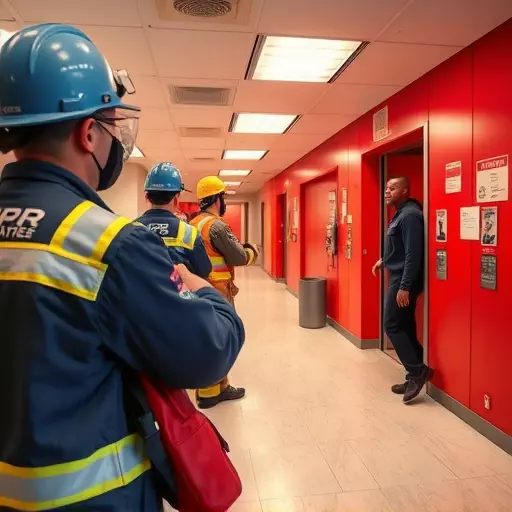In the field of workplace safety, measuring ROI is crucial for proving the value of safety programs and gaining stakeholder support. By evaluating financial and operational impacts of emergency training like fire safety and evacuation drills, organizations demonstrate benefits extend beyond costs, including reduced incidents, lower insurance expenses, and increased productivity. This data-driven approach focuses on key areas like emergency workplace safety training, workplace evacuation drills, and fire safety training to foster a culture of preparedness. Regular assessments optimize these programs, leading to tangible improvements in employee response times, participation rates, and incident reports, ultimately creating a safer and more productive work environment.
In today’s competitive business landscape, measuring the return on investment (ROI) of workplace safety programs is crucial. This article delves into the significance of ROI for emergency workplace safety training and evacuation drills, especially in light of fire safety initiatives. We explore key components that ensure effective training, highlighting best practices to optimize your company’s financial and employee safety outcomes. By understanding how to measure success, organizations can enhance their safety programs and create a more secure environment.
- Understanding the Importance of ROI for Workplace Safety Programs
- Key Components of Effective Emergency Workplace Safety Training and Evacuation Drills
- Measuring and Optimizing Fire Safety Training's Return on Investment (ROI)
Understanding the Importance of ROI for Workplace Safety Programs

In the realm of workplace safety, measuring the return on investment (ROI) is crucial for demonstrating the effectiveness and value of safety programs. Understanding the financial and operational impact of emergency workplace safety training, such as fire safety training and workplace evacuation drills, is essential for gaining buy-in from stakeholders and securing resources for ongoing initiatives. By quantifying the potential savings from reduced incidents, lower insurance costs, and increased productivity, organizations can make a compelling case for investing in robust safety programs.
The significance of ROI lies not only in its financial metrics but also in its ability to drive continuous improvement. Analyzing the outcomes of safety training allows companies to identify areas for enhancement, optimize their efforts, and adapt strategies based on real-world performance. This data-driven approach ensures that workplace safety initiatives remain relevant, effective, and aligned with evolving industry standards, ultimately fostering a safer and more productive work environment.
Key Components of Effective Emergency Workplace Safety Training and Evacuation Drills

Emergency workplace safety training and evacuation drills are vital components of a comprehensive safety program. These exercises should cover several key areas to ensure effectiveness. Firstly, familiarize employees with potential hazards specific to their work environment, such as fire risks or hazardous materials. This includes teaching them how to identify these dangers and the immediate steps to take upon detection. Secondly, conduct regular evacuation drills that simulate real-life scenarios to enhance everyone’s awareness and preparedness. Employees should understand emergency exit routes, assembly points, and any specialized equipment or procedures required for safe evacuation.
Additionally, providing hands-on training for using fire safety equipment like extinguishers and alarms is essential. Rehearsing these skills through drills allows workers to react instinctively during an actual emergency. Regular training sessions also enable organizations to assess and improve their overall response capabilities, ensuring that every employee is equipped to handle workplace emergencies with confidence and efficiency.
Measuring and Optimizing Fire Safety Training's Return on Investment (ROI)

Measuring and optimizing the return on investment (ROI) in fire safety training is crucial for any organization to ensure their emergency workplace safety training programs are effective and efficient. By conducting regular workplace evacuation drills, companies can assess the knowledge and preparedness of employees while identifying areas for improvement. This data-driven approach allows for tailored adjustments to training curricula, making them more impactful and relevant.
Optimizing ROI involves evaluating not just immediate recall of procedures but also long-term behavioral changes. Metrics such as reduction in response times during drills, increased participation rates, and decreased incident reports post-training can indicate the program’s success. Regularly reviewing these metrics enables organizations to make informed decisions about resource allocation, ensuring that investment in fire safety training yields tangible benefits and contributes to a safer working environment.


